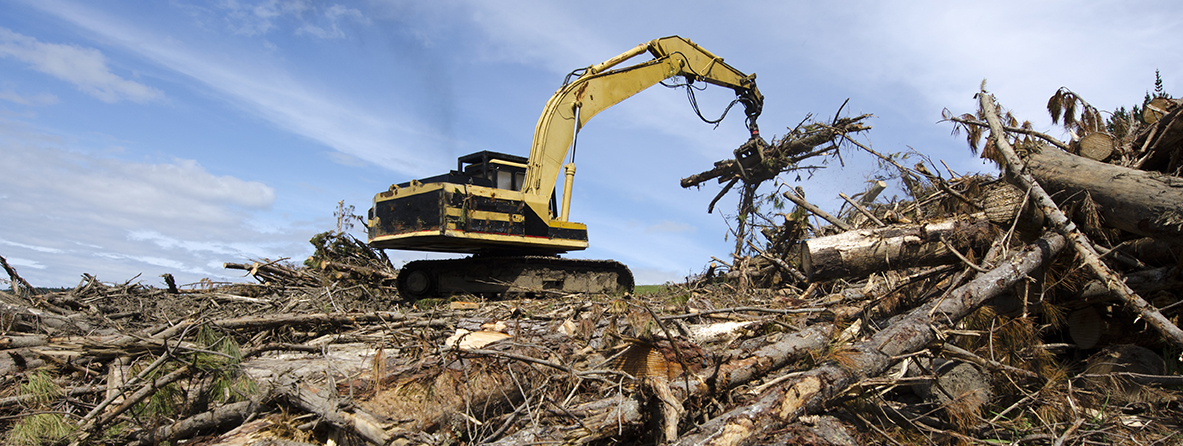Commercial forestry
As a farmer, landowner, or forestry operator, you need to ensure the environmental effects of your activities are appropriately managed and notify us before you carry out certain activities.

Forestry definitions
Commercial forestry includes exotic continuous-cover forests and plantation forestry, each with its own specific characteristics and regulatory considerations.
Commercial forestry
Commercial forestry refers to any forest at least one hectare in size, with a continuous cover of planted forest species, which was deliberately established for commercial purposes and which has been or will be harvested or replanted. The term includes all associated forestry infrastructure.
It does not include:
- a shelter belt of forest species, where the tree crown cover has, or is likely to have, an average width of less than 30m
- forest species in urban areas
- nurseries and seed orchards
- trees grown for fruit or nuts
- long-term ecological restoration planting of forest species
- willows and poplars space planted for soil conservation purposes.
Exotic continuous-cover forests (carbon forestry)
An exotic continuous-cover forest is one that’s deliberately established for commercial purposes. It is at least one hectare of continuous forest cover of exotic forest species that has been planted and:
- will not be harvested or replanted
- is intended to be used for low intensity harvesting or replanted
- includes all associated forestry infrastructure.
It does not include:
- a shelter belt of forest species, where the tree crown cover has, or is likely to have, an average width of less than 30m
- forest species in urban areas
- nurseries and seed orchards
- trees grown for fruit or nuts
- long-term ecological restoration planting of indigenous forest species
- willows and poplars space-planted for soil conservation purposes.
Exotic continuous-cover forestry is subject to all of the regulations that apply to plantation forestry. Indigenous continuous-cover forestry is not subject to the regulations.
Plantation forestry
Plantation forestry refers to any forest at least one hectare in size, with a continuous cover of planted forest species, which was deliberately established for commercial purposes and which has been or will be harvested or replanted. The term includes all associated forestry infrastructure.
It does not include:
- a shelter belt of forest species, where the tree crown cover has, or is likely to have, an average width of less than 30m
- forest species in urban areas
- nurseries and seed orchards
- trees grown for fruit or nuts
- long-term ecological restoration planting of forest species
- willows and poplars space planted for soil conservation purposes.
Rules and regulations
On 3 November 2023, the National Environmental Standards for Commercial Forestry (NES-CF) replaced the National Environmental Standards for Forestry (NES-PF). The NES-CF lays out the rules for managing the environmental effects of plantation and exotic continuous-cover forestry (carbon forestry).
Regional Plan regulations may apply where a regional rule is more stringent than a national rule.
National Environmental Standards for Commercial Forestry
The new commercial forestry rules in the National Environmental Standards for Commercial Forestry (NES-CF) aim to ensure the delivery of the right type and scale of forests, in the right place. This is an action in the first Aotearoa Emissions Reduction Plan. The rules cover:
- the management of commercial forestry to give councils more power to decide where new forests are located
- the management of exotic continuous-cover forests (carbon forests), which are now managed in the same way as plantation forests. The rules do not apply to native planting or certain other types of planting, for example, shelter belts
- the management of the effects of large-scale forestry on the environment and communities to ensure the long-term sustainability of new and existing exotic forests.
The requirement to include the wilding tree risk calculator workings and score (regulation 79(5)(a)) came into effect on 3 January 2023. This excludes the requirement to provide an assessment of each element of wilding tree risk for each relevant area of forest (regulation 79(5)(b)), which came into effect on 3 April 2024.
Risk assessment tools
As part of the changes from the NES-PF to the NES-CF, the Ministry for Primary Industries has provided three risk assessment tools to help assess the environmental effects of certain activities:
Regional plans
The Canterbury Land and Water Regional Plan, Plan Change 7, and the Regional Coastal Environment Plan for the Canterbury Region apply in some instances when a regional rule is more stringent than a national rule.
We regulate afforestation, pruning and thinning to waste, earthworks, river crossings, replanting, forest quarrying, harvesting, mechanical land preparation and replanting.
Your responsibilities
If you plan to plant or replant an area larger than 1 hectare with exotic trees (any forest species that you intend to harvest) or trees for carbon, you should:
Notify a permitted activity
Anyone undertaking commercial forestry activities must supply written notice within the appropriate timeframe to us for afforestation, replanting, earthworks, river crossings, quarrying and harvesting activities before the activity commences. If the activity is not permitted under the NES-CF, you will need to apply for resource consent.
You can notify us in several ways:
- complete the online Notice of Permitted Activity form
- or email a completed Word form (Word file, 233KB) to forestrynotification@ecan.govt.nz
- or hand a completed Word form (Word file, 233KB) in as a hard copy at any of our offices.
Prepare a management plan
Prepare a management plan in accordance with schedules 3, 4, 5 and/or 6 of the National Environmental Standards for Commercial Forestry (NES-CF), depending on the type of activity you are undertaking.
Undertake a wildling pine assessment
Have a wilding pine assessment completed by a “suitably competent person” as per regulation 11 (2) of the NES-CF.
